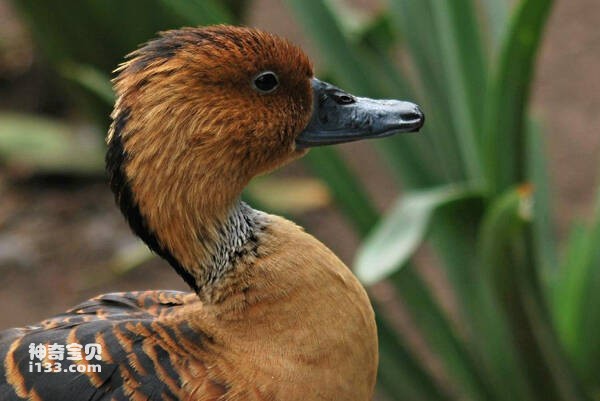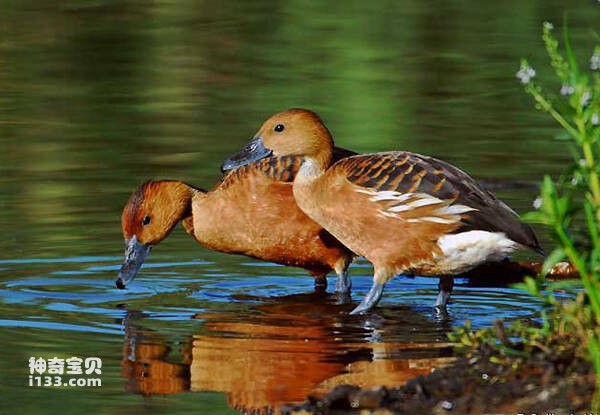Dendrocygna bicolor
IUCN
LCBasic Information
Scientific classification
- name:Dendrocygna bicolor
- Scientific Name:Dendrocygna bicolor,Fulvous Whistling-duck,Fulvous Duck,Fulvous Whistling Duck
- Outline:Waterfowl
- Family:
Vital signs
- length:48-53CM
- Weight:910-1300g
- lifetime:No textual research information is available
Feature
The size of a mallard duck, rusty brown with a white waist and cream streaks on the sides
Distribution and Habitat
Located in Angola, Antigua and Barbuda, Argentina, Aruba, Bahamas, Bangladesh, Barbados, Belize, Benin, Bolivia Plurinational State, Bonaire, Saint Eustatius and Saba, Botswana, Brazil, Burkina Faso, Burundi, Cameroon, Canada, Cayman Islands, Central African Republic, Chad, Chile, Colombia, Democratic Republic of the Congo, Costa Rica, Cote d 'Ivoire, Cuba, Curacao, Dominica, Dominican Republic, Ecuador, El Salvador, Eritrea, Ethiopia, French Guiana, Gabon, Gambia, Ghana, Guadeloupe, Guatemala, Guinea, Guinea-Bissau, Guyana, Haiti, Honduras, India, Kenya, Lesotho, Madagascar, Malawi, Mali, Martinique, Mauritania, Mexico, Montserrat, Mozambique, Myanmar, Namibia, Nepal, Niger, Nigeria , Pakistan, Panama, Paraguay, Peru, Puerto Rico, Rwanda, Saint Kitts and Nevis, Saint Lucia, Saint Vincent and the Grenadines, Senegal, Saint Maarten (Dutch part), South Africa, South Sudan, Sudan, Suriname, Eswatini, United Republic of Tanzania, Togo, Trinidad and Tobago, Turks and Caicos Islands, Ug
Appearance
The brown tree duck is 48-53 cm long. The size of a mallard duck, rusty brown with a white waist and cream streaks on the sides. The beak is gray, the head and upper body are very long, the head and upper body are pale yellow, the sides are some red, the crown is dark, the back and wings are dark gray. The tail and wings have chestnut brown markings, and the upper tail has a half-moon shaped white patch, which is particularly noticeable when flying. The sides of the chicks are relatively light in color and the tail is different in color.
Size measurement: weight 1000-1300 grams, ♀910-1015 grams; Body length 540-615 mm, ♀470-550 mm; Rostral bees, 53-61 mm, ♀49-59 mm; Wing ♂270-285 mm, ♀250-286 mm; Tail ♂72-112 mm, ♀69-125 mm; The tarsus reaches 40-55 mm, ♀39-50 mm.
Details
Brown tree duck (Dendrocygna bicolor) Fulvous Whistling-duck, Fulvous Duck, Fulvous Whistling Duck, no subspecies.

The brown tree ducks stand upright when they rest, and often a few look around from time to time, and take off first when people or enemies are near, followed by other trees and ducks, and are extremely alert. Often in groups of a few to dozens of activities and foraging, there are many to hundreds of large groups. It is weak in flight and not as fast as other ducks. Also good at swimming and diving, and diving ability is very strong, a dive up to ten minutes. During the hot day, they often sleep and rest in the reeds or other tall water weeds. When food is abundant and undisturbed, they often inhabit fixed places and generally do not change their habitat or even migrate long distances.

Listed on the International Union for Conservation of Nature (IUCN) 2013 Red List of Threatened Species ver 3.1 - Not Threatened (LC).
Listed in Appendices I, II and III of the Convention on International Trade in Endangered Species of Wild Fauna and Flora (CITES) 2019 edition Appendix III.
Protect wild animals and eliminate wild meat.
Maintaining ecological balance is everyone's responsibility!








